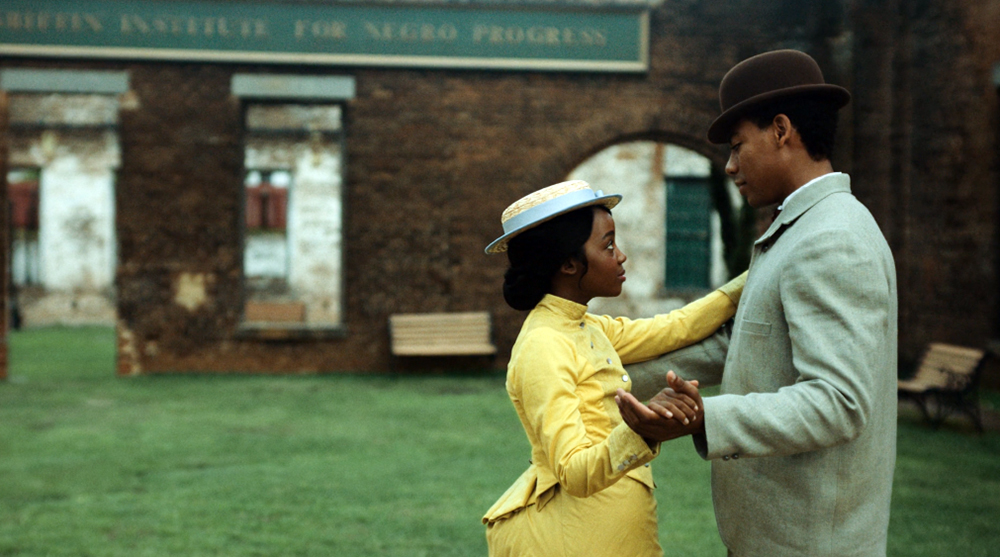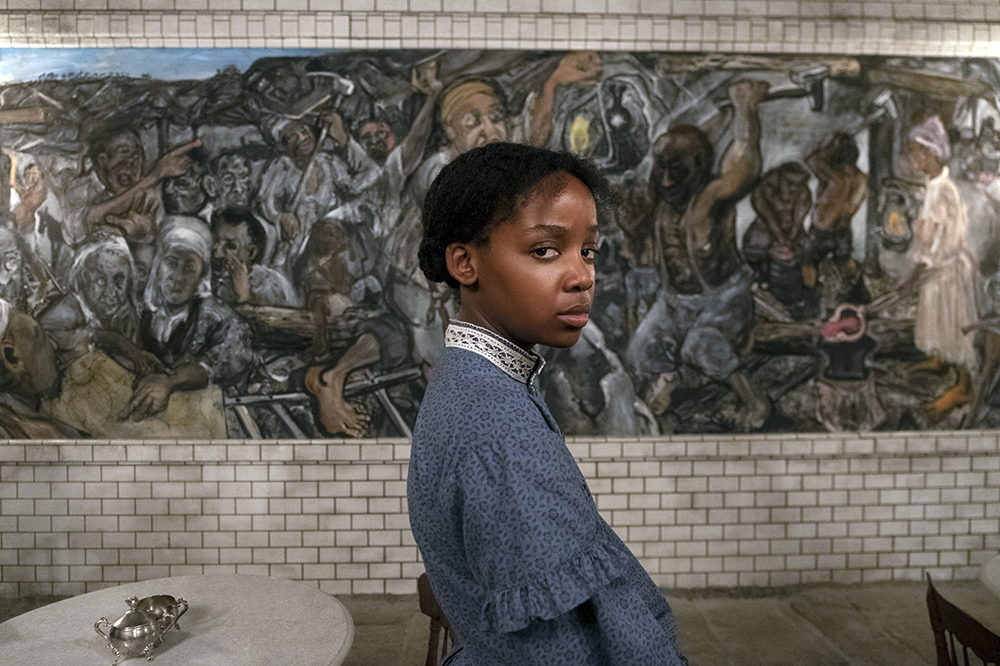One of my favorite film noirs is Dark Passage, a 1947 Warner Brothers film by director Delmer Daves. Humphrey Bogart stars as an escaped convict trying to clear his name. With the help of Lauren Bacall, he gets facial reconstructive surgery in an attempt to evade police. What’s great about Dark Passage is that the entire first hour of the film is shot from a first-person point of view. We hear Bogart’s voice, but we never see his face — at least not until he gets a new one. POV had been used before, but never so successfully. Only a handful of other films have attempted such a trick, most recently the 2015 shoot-em-up Hardcore Henry, which played on modern audiences’ familiarity with first-person shooter video games.
Done well, POV camera helps a viewer identify more deeply with a character because we see what they see, which is why director RaMell Ross chose to shoot Nickel Boys in the first-person perspective. Based on a 2019 Pulitzer Prize-winning novel by Colson Whitehead, Nickel Boys tells the story of Elwood (Ethan Cole Sharp as a child, and later Ethan Herisse), a Black teenager in 1962 Tallahassee who is generally quiet, studious, and likes to read stuff like Pride and Prejudice. The Civil Rights era is in full swing, but life is still tough for Black kids in Jim Crow-era Florida. Luckily, Elwood’s grandmother (Aunjanue Ellis-Taylor) is very supportive, and he has a great teacher (Jimmie Fails) who sees his potential. When he gets an opportunity to take college classes at the Marvin Griggs Technical School, he jumps at the chance. Lacking transportation, he decides to hitchhike to his first class. But it turns out that the man who picks him up is driving a stolen car, and the police don’t believe Elwood had nothing to do with it. So Elwood finds himself at Nickel Academy, a reform school that is notorious for its cruelty towards its charges. When Elwood arrives in the back of a police car, the two white punks he rides with are dropped off in front of a nice-looking Antebellum building. The Black kids live in dilapidated dorms out back.
The nerdy Elwood doesn’t get along with the other kids at the school, but Turner (Brandon Wilson) stands up for him, and the two become friends. When he gets mixed up in a restroom altercation with bully Griff (Luke Tennie), Elwood finds out exactly how brutal the Nickel Academy is. Administrator Mr. Spencer (Hamish Linklater) personally whips Elwood so badly that when his grandmother arrives for a visit, they won’t let her see him. Instead, she runs into Turner, who can’t assure her that everything is all right.
Elwood and Turner try to survive Nickel Academy, as we switch back and forth between their viewpoints. Later, in flash-forward sequences set 20 and 30 years in the future, the POV changes, so we see the back of Elwood’s head (now played by the dreadlocked Daveed Diggs) as he encounters people from his past he might rather forget.
Herisse, Wilson, and Tennie offer solid performances, and Ellis-Taylor’s turn as a loving grandmother who is losing the fight to bring her kin home brings the tears. But they all get overshadowed by the film’s technical achievements. The POV shooting works, for the most part, but Ross has trouble committing to the bit. His intention is to make us feel Elwood and Turner’s visceral fear and despair, but when he intercuts the action with archival footage to represent the passage of time, as well as the occasional dream sequence, it undercuts the effect he’s going for.
Whitehead based Nickel Academy on the Dozier School for Boys, a Florida reform school that was shut down in 2011 after 111 years of burying, sometimes literally, “undesirable” young men. But the problem of minority juveniles caught in an uncaring and cruel system hasn’t gone away. As Turner observes late in the film, “There’s Nickels all over this country.”
Nickel Boys opens in theaters Friday, December 13th.


